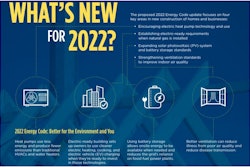
The California Nevada Cement Association (CNCA) announced its plan for the industry to achieve net-zero carbon emissions by 2045, outlining key opportunities and actions to achieve this goal. The California cement industry supports the state’s greenhouse gas (GHG) reduction goal and is committed to achieving carbon neutrality, consistent with the reality that it is necessary to curb emissions in order to avoid the worst impacts of climate change.
“Releasing this industry-wide roadmap is an exciting and critical step toward carbon neutrality,” says Tom Tietz, Executive Director of CNCA. “However, we cannot get to net-zero alone and this roadmap is also an invitation for state leaders, environmental groups and stakeholders throughout the cement-concrete-construction value chain to collaborate on pursuing this bold goal.”
CNCA is a not-for-profit organization committed to developing sustainable and economical construction solutions for California and Nevada with an emphasis on the use of cement and concrete. CNCA provides expert technical leadership, design assistance, research, and educational opportunities designed to responsibly transform our built environment and improve the lives of the people throughout the region. The member companies of the CNCA are cement producers and shippers that manufacture cement products.
Cement is the main ingredient in concrete, one of the most durable, resilient and affordable building materials. Concrete is essential in building homes, structures and critical infrastructure that can withstand and provide protection from fires, floods and other consequences of a changing climate while also delivering use-phase emissions savings over a full lifetime.
CNCA’s Roadmap to Carbon Neutrality
- Reducing manufacturing process emissions
- Reducing combustion emissions through fuel switching
- Increasing distributed electricity generation
Many of the technologies, fuels, materials, and processes for dramatically reducing the industry’s emissions footprint already exist. However, barriers including statutory, regulatory, and permitting hurdles, market acceptance barriers, cost challenges, supply limitations and technology gaps delay or constrain their deployment and limit their impact. More can and must be done to create the necessary conditions for the industry to move forward with large-scale, long-term investments in emissions reduction.
“We are committed to providing innovative and sustainable solutions including low-carbon cement and concrete that is critical to a low carbon future and circular economy,” says Allen Hamblen, President and CEO of CalPortland Company, a member of CNCA. “We recognize there are no shortcuts to achieve carbon neutrality. We look forward to working with key policy and regulatory decision makers to urgently address barriers to emission reduction opportunities.”
Opportunities for 2021
The roadmap details key emissions reductions strategies for each pathway, but the three immediate, most impactful opportunities for 2021 are:
- Acceptance of Portland Limestone Cement (PLC) for Caltrans projects. PLC uses more limestone to reduce emissions up to 10% while maintaining the integrity and performance of traditional cement. Currently, 34 other state departments of transportation have adopted it for their construction projects, yet PLC is currently not accepted for Caltrans-specified construction projects. As one of the state’s largest consumers of cement, anticipated Caltrans acceptance would have broad impact and influence in many cities and counties that would create new markets for lower-carbon cement.
- Invest in a promising and critical long-term technology – carbon capture, usage and storage (CCUS). CCUS can offer a carbon capture rate upwards of 90% of process and combustion emissions, but projects are extremely capital intensive and lengthy permitting processes add uncertainty. Innovation-supportive policies that catalyse public and private investment is needed for research and development as carbon neutrality will be out of reach for the California cement industry until cost-effective CCUS technology is commercially available.
- Reduce combustion emissions by switching to lower emissions alternatives. Using engineered waste materials and biomass as fuel would drive a substantial reduction in emissions while also diverting waste from landfills or incineration.
“We are committed to decarbonizing over the next 24 years using this roadmap as our guide,” Steve Wise, President of National Cement of California – a CNCA member – says. “The road to decarbonization can have exponential impact but can’t be done by one company alone. That’s why we’re joining to do our part in having a positive impact.”



















